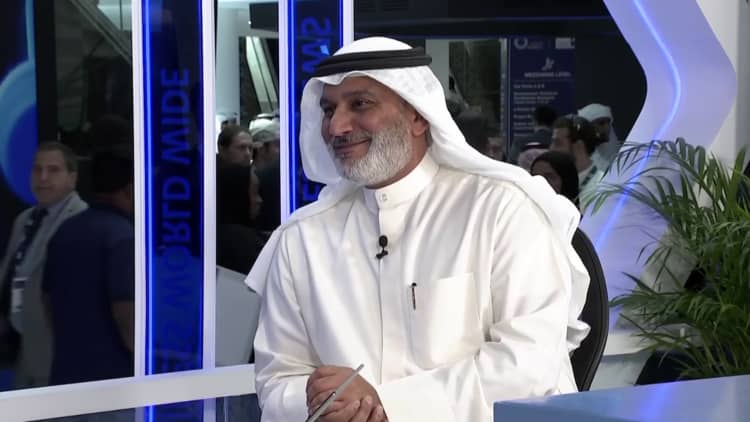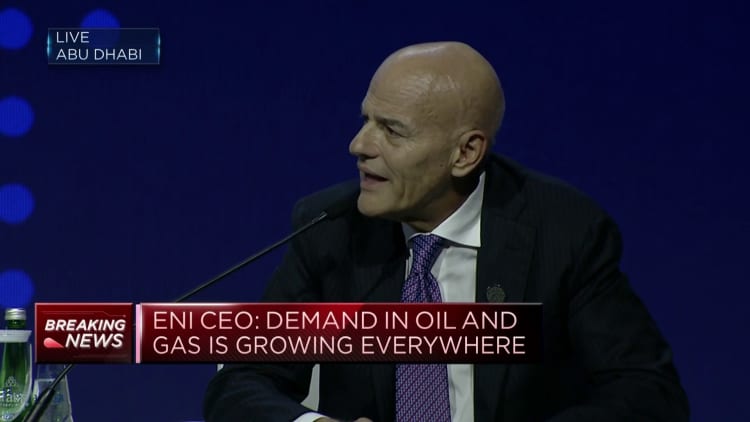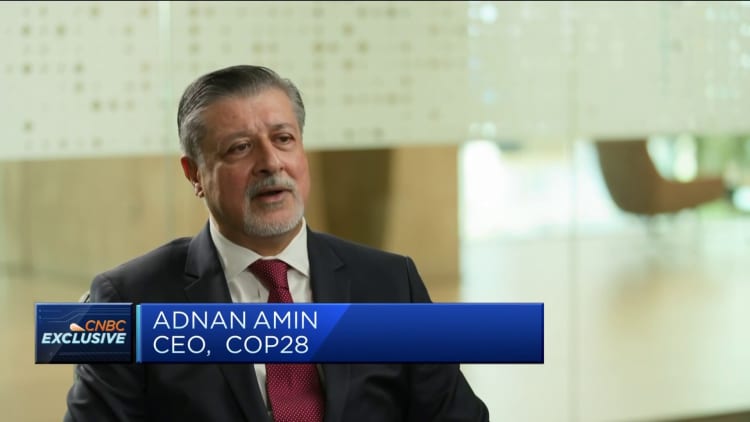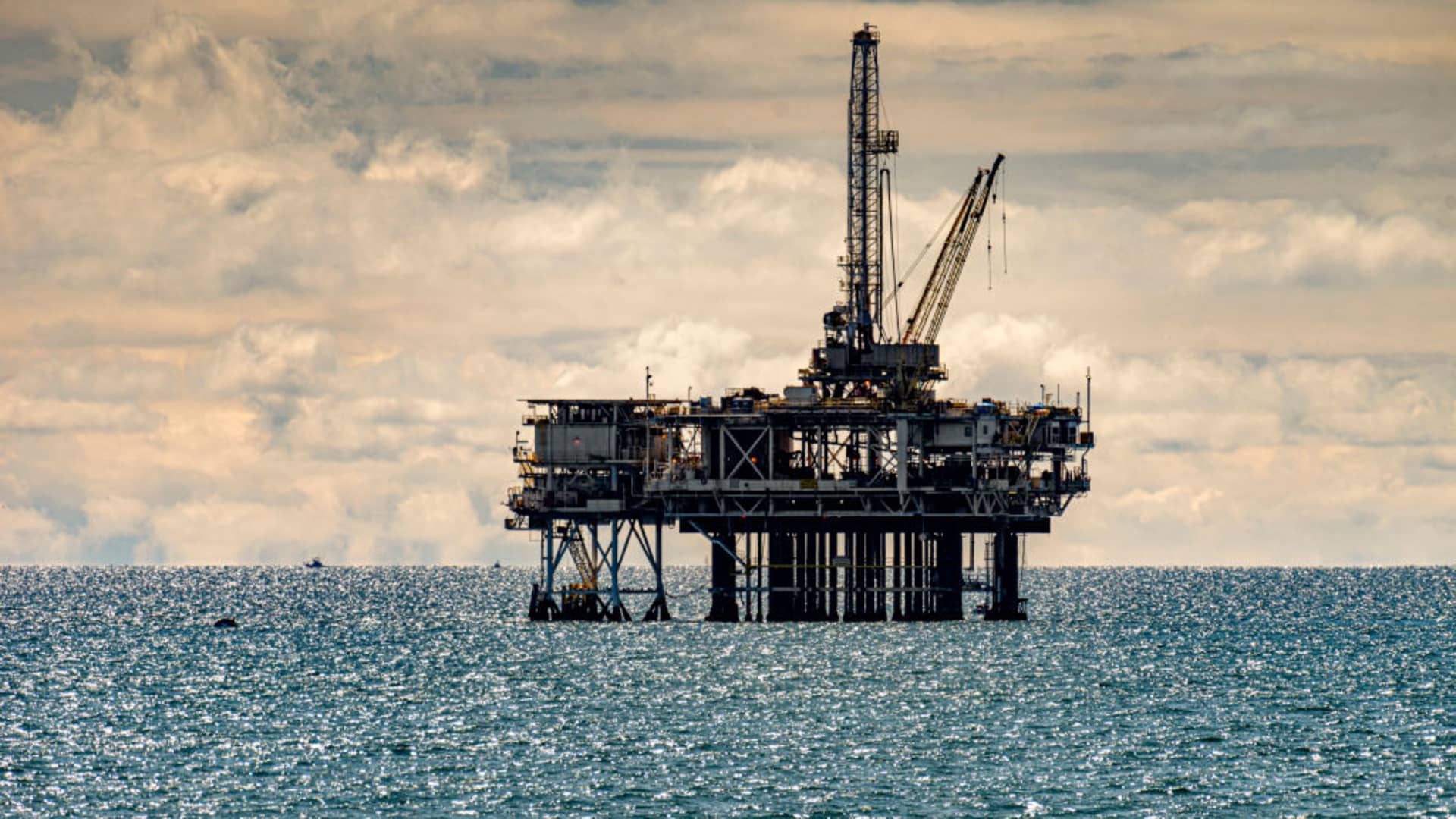An off-shore oil platform off the coast in Huntington Beach, California on April 5, 2020.
Leonard Ortiz | MediaNews Group | Orange County Register | Getty Images
It’s been a war of words and numbers between two major players in the energy industry – the International Energy Agency and OPEC – as they spar over the future of something crucial to crude producers’ survival: peak oil demand.
Peak oil demand refers to the point in time when the highest level of global crude demand is reached, which will be immediately followed by a permanent decline. This would theoretically decrease the need for investments in crude oil projects and make them less economical as other energy sources take over.
For oil producing countries and companies, it’s existential.
That’s why when the chief of the IEA, an intergovernmental organization that advocates for oil consuming countries, predicted that peak oil demand would be reached by 2030 and hailed the decline of crude as a “welcome sight,” OPEC was furious.
“Such narratives only set the global energy system up to fail spectacularly,” OPEC Secretary General Haitham al-Ghais said in a Sept. 14 statement. “It would lead to energy chaos on a potentially unprecedented scale, with dire consequences for economies and billions of people across the world.” He accused the agency of fear-mongering and risking the destabilization of the global economy.
More broadly, the spat reflects the ongoing clash between climate change concerns and the need for energy security. That juxtaposition was on full display at ADIPEC – the annual gathering whose name stood for Abu Dhabi International Petroleum Exhibition Conference until this year, when it was quietly changed to Abu Dhabi International Progressive Energy Conference.

The United Arab Emirates will be hosting the COP28 climate summit in November and has been marketing its sustainability campaigns, all the while ramping up its crude production capacity in preparation for what it expects to be a growth in future demand. The UAE is OPEC’s third-largest oil producer.
CEOs of oil majors and state oil producers stressed the need for a dual approach, insisting their companies were part of the solution, not the problem, and that an energy transition is not possible without the security and economic support of the hydrocarbons sector.
“I don’t know if we’re going to have peak oil in 2030. But it’s very dangerous to say that we have to reduce investment because that is against the transition,” Claudio Descalzi, CEO of Italian multinational energy company Eni, said Monday during a panel hosted by CNBC’s Steve Sedgwick.
He warned that if oil investment – and therefore supply – drops and fails to meet demand, prices will surge, crippling the economy.
Descalzi acknowledged that burning fossil fuels “is producing lots of CO2,” but added “we cannot shut down everything and rely just on renewables and that is the future, no. It’s not like that. We have infrastructure, we have investment that we have to recover and we have the demand that is still there.”

The IEA wrote in its Aug. 2023 report that “world oil demand is scaling record highs” and is set to expand this year, but added that faster adoption of electric vehicles and renewable power, as well as the West’s decoupling from Russian gas, will hasten peak demand before 2030.
“Based on current government policies and market trends, global oil demand will rise by 6% between 2022 and 2028 to reach 105.7 million barrels per day (mb/d) … Despite this cumulative increase, annual demand growth is expected to shrivel from 2.4 mb/d this year to just 0.4 mb/d in 2028, putting a peak in demand in sight,” the agency wrote in a June 2023 report.
The IEA also outlined its roadmap for Net Zero by 2050, calculating that worldwide oil demand would need to fall to 77 million barrels per day by 2030 and 24 million barrels per day by 2050.
But those figures are staggering when confronted in real-world terms: during the most intense global lockdown period of the Covid-19 pandemic, in March and April of 2020, worldwide daily oil demand was slashed by 20% – something only possible because the economy came to a near-complete standstill. The IEA’s roadmap calls for daily oil demand to be slashed by 25% in seven years’ time.
‘We all strive for the same thing’
OPEC leaders, meanwhile, point to continuing yearly increases in oil demand, particularly from major emerging markets like China and India.
But such a challenge shouldn’t distract from the immense damage to come if no action is taken, climate scientists warn. The U.N. Intergovernmental Panel on Climate Change concludes that fossil fuel emissions must halve within the next decade if global warming is to be contained to 1.5 degrees Celsius above pre-industrial levels. And according to the panel, roughly 90% of global CO2 emissions come from fossil fuels and the heavy industry.
Thus continues the tug-of-war between climate action advocates and the hydrocarbons industry, despite some calls by the latter that they should work together. Oil companies have also been accused of dialing back their climate pledges in recent months following record annual profits.

Speaking to CNBC’s Dan Murphy at ADIPEC, OPEC’s al-Ghais appeared to temper his response to the IEA’s latest forecast figures.
“We respect the IEA fully, of course,” he said Monday. “What we believe in is that we cannot just replace the energy system that has existed for so many years, over a decade or even two. And that’s why we continue to emphasize the importance of investing in oil, as well as investing in renewable energy, hydrogen.”
“And the important thing is the technologies,” al-Ghais added, “because ultimately, we all strive for the same thing, which is meeting the Paris Agreement objectives” of limiting the Earth’s temperature increase to 1.5 degrees Celsius.
That desire is likely to be tested at COP28 when world leaders again convene in Dubai to publish a joint communique on climate action.

